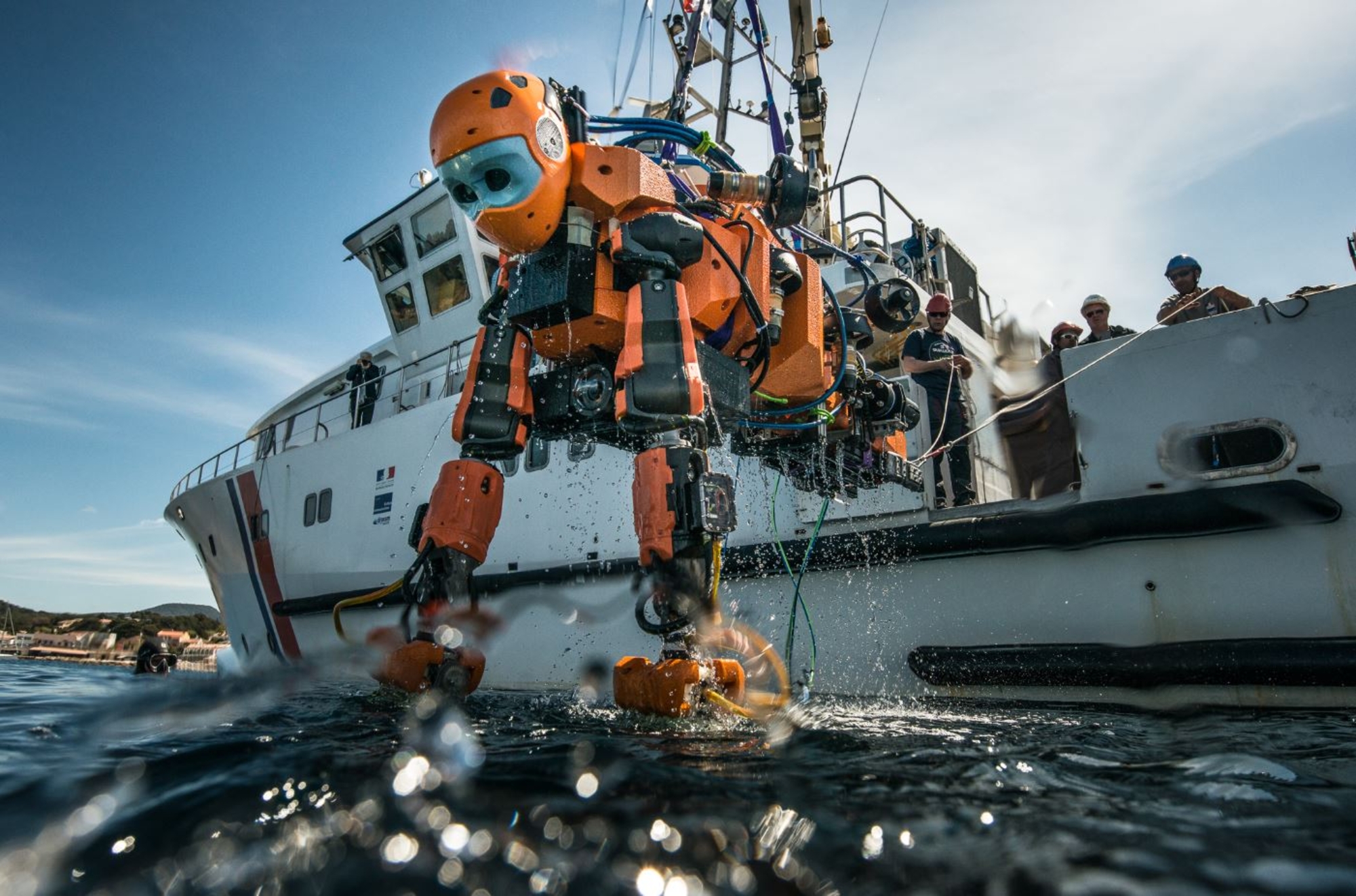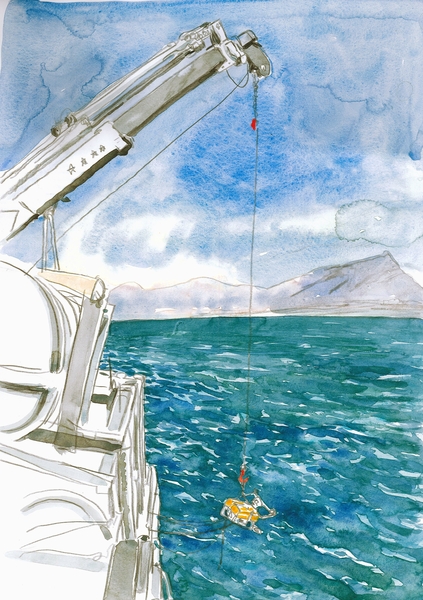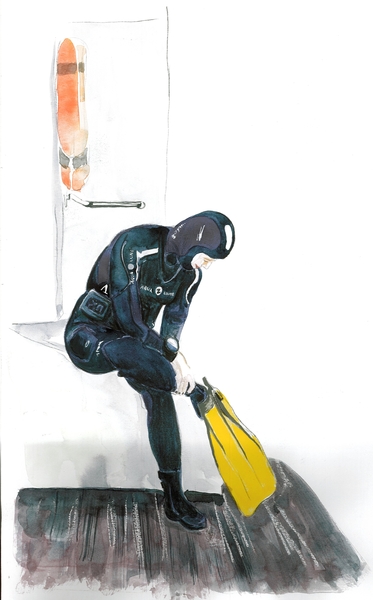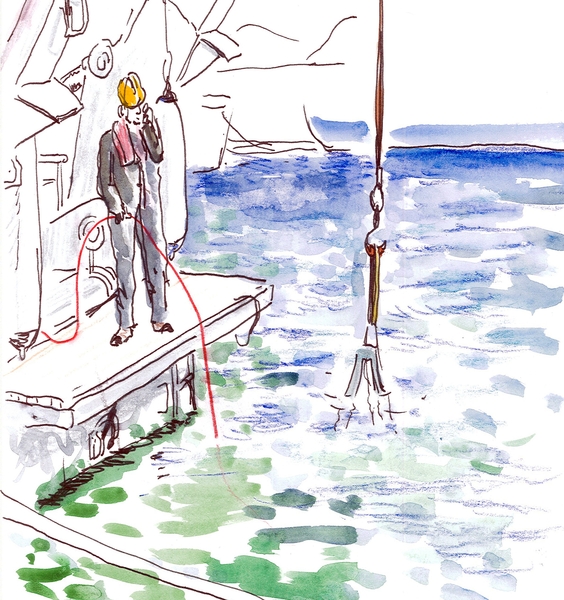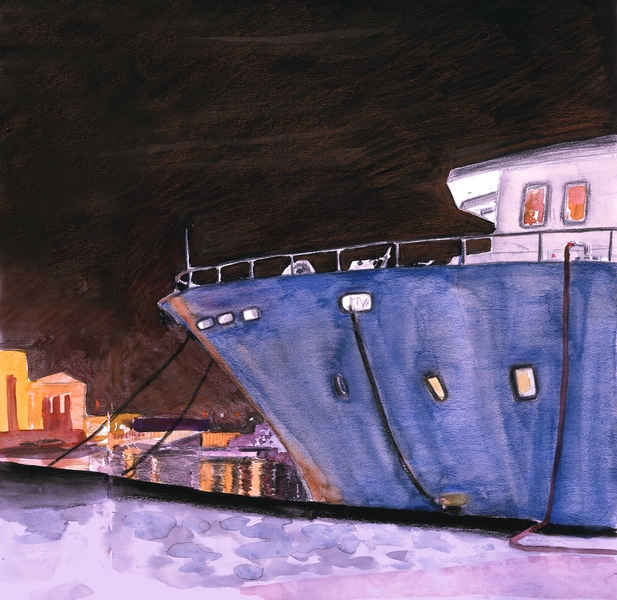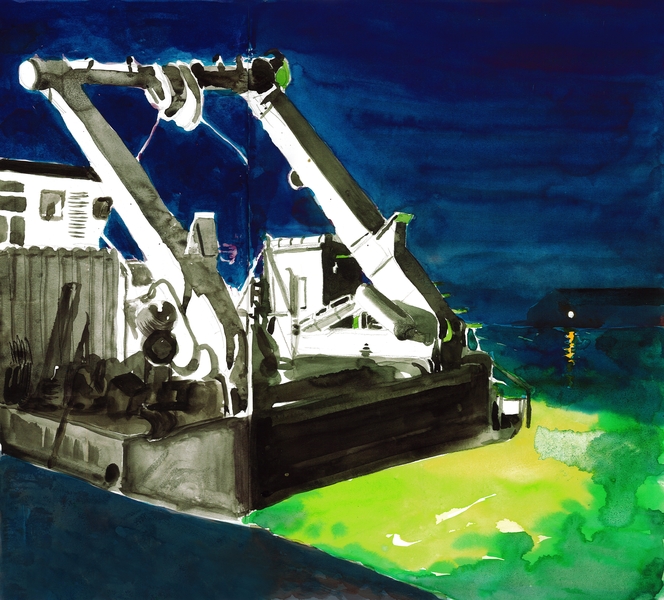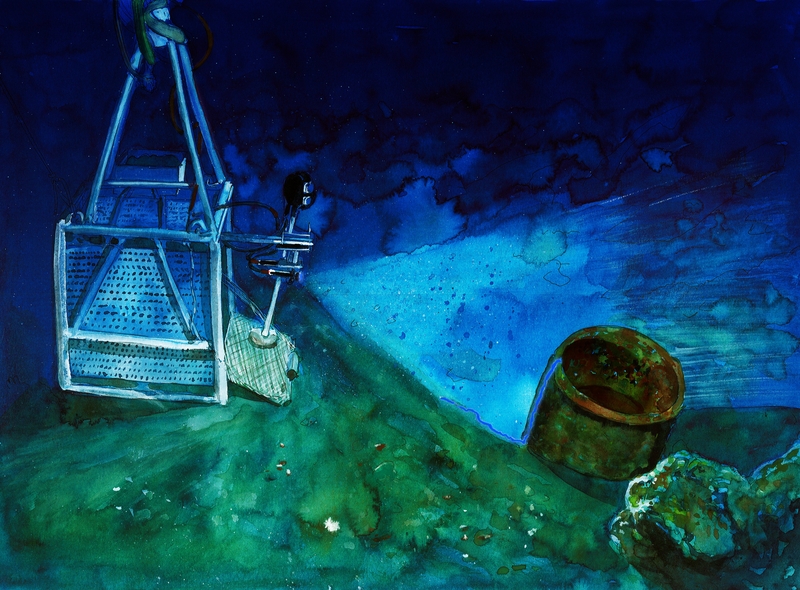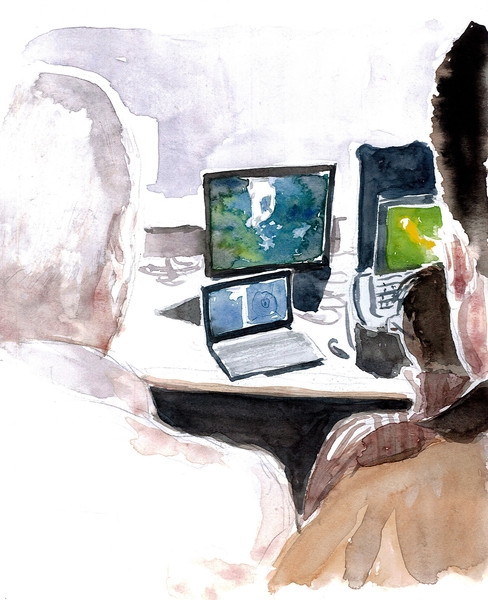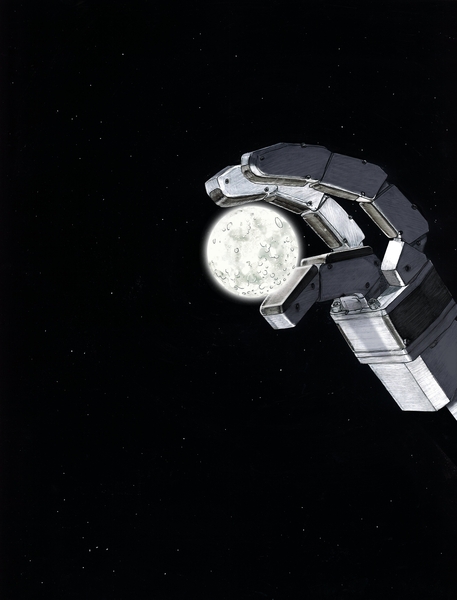
- Home
- A great scientific adventure
- Deep sea archaeology
- Lune
Drawing of a ROV suspended from a ship's crane. Drawing by Bastien Hulot
Drawing of a diver putting on his flippers. Drawing by Bastien Hulot
Drawing of DRASSM researchers. Drawing by Bastien Hulot
Raising remains with the crane. Drawing by Bastien Hulot
Drawing of diving wetsuits. Drawing by Bastien Hulot
Drawing of a ship at harbour. Drawing by Bastien Hulot
Drawing of the Lune excavation research ship. Drawing by Bastien Hulot
Drawing of a basket being lowered to the Lune wreck. Drawing by Bastien Hulot
Drawing of researchers looking at the remains of the Lune. Drawing by Bastien Hulot
Drawing of a ROV grabber holding the Lune. Drawing by Bastien Hulot
DRASSM’s desire to undertake a pilot excavation to develop and test methods suitable for studying wrecks lying at extreme depths finally came to fruition in 2012. The target of the operation was the wreck of the Lune, a vessel of Louis XIV’s navy which sank in 1664 in 90 metres of water off Toulon.
The Lune, the dark side of the Sun-King
There is no fate so terrible as the one that befell this warship which, like many others, had been a party to an expedition that went awry. Upon their return the defeated regiments – the living proof of the humiliation inflicted on Louis XIV – were kept at a distance from the coast despite the vessels being as worn out as the men. On 6 November 1664 the vessel, unable to resist the storm, sank like a stone with a thousand men aboard. Few survived. When this well-preserved wreck was discovered by the IFREMER submarine Nautile in 1993, she had been waiting almost 330 years for someone to interrupt her slumbers.
A field laboratory for the future of archaeology
When the vessel foundered, she took with her men, their weapons, equipment and personal objects. As a result, her wreck is an incredible time capsule under the sea.
In 2012, after several trials deploying an ROV fitted initially with a flexible claw and then an anthropomorphic hand, the focus of the operations (under the direction of Michel L’Hour, DRASSM) turned to developing revolutionary prototypes which could facilitate excavations carried out by robotic devices.
Computer simulations, virtual-reality diving and futuristic technology will all be methodically trialled on the wreck of the Lune. Through these innovative excavation methods DRASSM rises to the challenge of this millennium, blazing a new trail for underwater archaeology, one that leads to the extreme depths of the sea.
